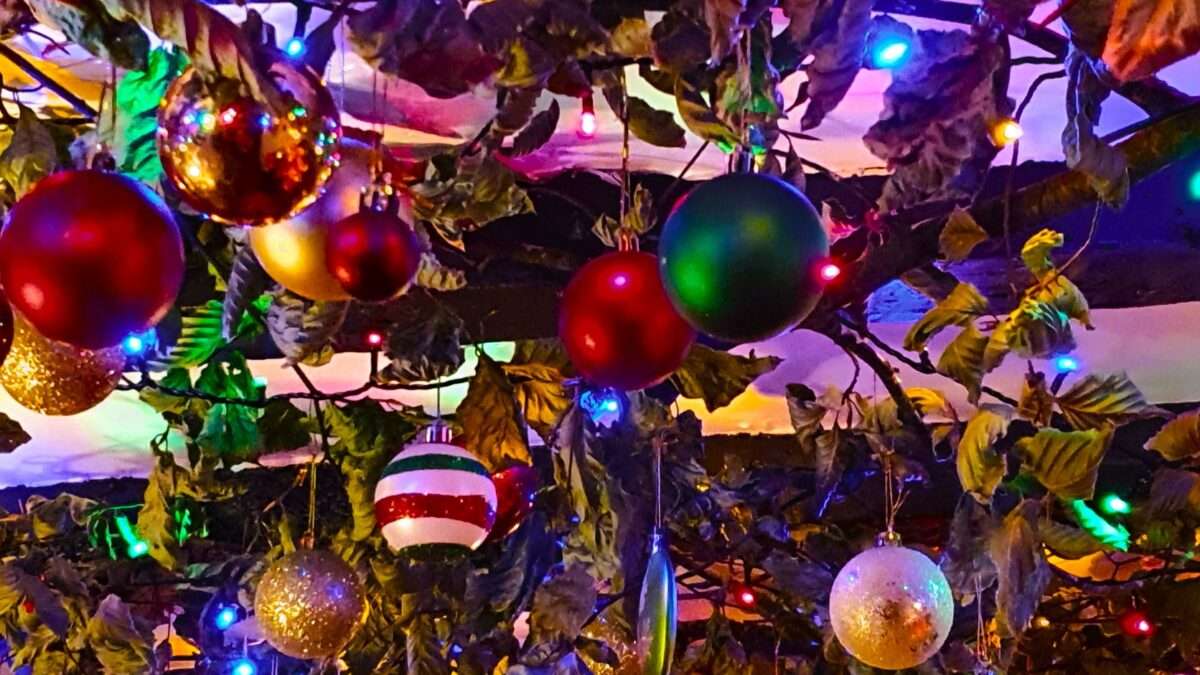Being a bit of a magpie, I’ve always adored the glitz and shine of Christmas baubles, but hadn’t thought about them too deeply until recently.
So, on an evening stroll around Looe, Mr Word Loft and I were attracted to Ye Olde Salutation Inne with its amazing seasonal decorations. The door frame is encrusted with wonderful globes in a medley of red, green and gold hues, with illuminated bay trees on either side.
The bar and restaurant sparkle with warmth and creativity and the ceilings are bejewelled with hundreds more glittering balls. Different sizes and patterns dangle from branches fixed to old beams adding to the cosy atmosphere.
How long did it take to string them up, and how was it done? As I’m writing, I’m wondering why I didn’t ask. Probably, because it was very busy, and I was enjoying a hearty chicken and mushroom pie with trimmings.
As I relaxed and admired the host of baubles, I was reminded, as a child, I thought they were called ball-balls until I saw the written word.
Glass-blown orbs are thought to have originated in Germany in the 16th century and are such a traditional part of Christmas that I seem to have taken them for granted over the years.
They were introduced to Britain during Queen Victoria’s reign when her German husband, Prince Albert presented the Christmas tree to the royal family. The embellished fir tree soon became popular throughout the kingdom and replaced other evergreens used previously.
These days, trinkets come in all sorts of designs and are formed from an assortment of materials. Some replicate gingerbread, apples, candy canes, and other edible goodies adorning trees in the past. But somehow the spherical bauble’s simplicity is magical, picking up reflections of open fires and twinkling fairy lights as they twist about.
Wishing everyone a peaceful and joyful festive season.
Until next year,
Sue. X

